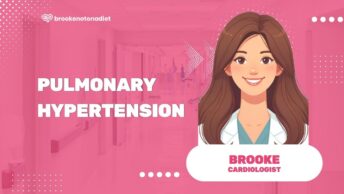In my years of health and wellness research, I’ve found few topics as intertwined as blood pressure and smoking. It’s a well-known fact that smoking can have a significant impact on our health, but the connection with blood pressure isn’t always as clear.
In this article, I’ll peel back the layers of this complex relationship. We’ll explore how smoking affects blood pressure, the risks associated with this, and how quitting can reverse these effects. So, if you’re looking to understand the link between these two, you’ve come to the right place.
What is Blood Pressure?
Essentially, blood pressure is the force exerted by circulating blood on the walls of our body’s arteries. It’s crucial to our survival since this force allows blood to deliver oxygen and nutrients to each body part.
But what’s a blood pressure chart, and why should I care about it? If you’ve ever had your blood pressure checked, you probably received a reading of two numbers. Let me break down what those reference. The top value, or systolic, displays the force exerted on artery walls when the heart beats. The bottom value, the diastolic, shows the pressure on artery walls between heartbeats. These figures are important to understand why normal blood pressure ranges matter.
Here’s a common Blood Pressure Chart for reference:
| Blood Pressure Category | Systolic (top number) | Diastolic (bottom number) |
|---|---|---|
| Normal | Less than 120 | Less than 80 |
| Elevated | 120-129 | Less than 80 |
| Hypertension Stage 1 | 130-139 | 80-89 |
| Hypertension Stage 2 | 140 or higher | 90 or higher |
| Hypertensive crisis | Higher than 180 | Higher than 120 |
This chart’s one tool that healthcare providers use when they’re evaluating your overall health.
how can a blood pressure monitor help? Simple, it provides a quick, non-invasive way of checking blood pressure at home. Regular monitoring can quickly pinpoint fluctuations, letting you take steps toward lowering blood pressure if it’s consistently too high.
Believe me, you don’t need a medical degree to understand the chart or the monitor. It’s all about knowing your body. With some practice, you’ll soon be adept at understanding what your blood pressure readings indicate. It’s worth the effort – managing your blood pressure is a surefire way to promote your long-term health and well-being.
Remember, knowledge is power – and in this case, it’ll empower you to manage your health better. Use your understanding of blood pressure to make informed choices, like quitting smoking, which can significantly boost your health.
Stick with me, and I’ll guide you through the often misunderstood connection between smoking and blood pressure. It’s an important relationship every smoker, and even the non-smokers amongst us, should understand.
The Link Between Smoking and Blood Pressure
When it’s about blood pressure, smoking may seem like a far-fetched association. However, the reality is that smoking and blood pressure are more closely connected than you may think. Here, we’ll delve into the intricate relationship between them and understand how smoking impacts blood pressure.
Effects of Smoking on Blood Pressure
When you light up a cigarette, the nicotine present in the smoke enters your bloodstream. Nicotine, a potent stimulant, triggers a short-lived spike in your blood pressure and heart rate. This instantaneous effect, though temporary, can be harmful in the long run with continuous exposure.
Additionally, the chemicals in cigarettes cause damage to the walls of your arteries, making them hard and narrow – a condition called atherosclerosis. This in turn makes your heart work harder, elevating your blood pressure levels.
Let’s delve deeper into the two critical phenomena of smoking and blood pressure: Hypertension and Hypotension.
Smoking and Hypertension
Smoking is associated with a higher risk of hypertension, commonly known as high blood pressure.
| Risk Factors | Explanation |
|---|---|
| Nicotine | Causes blood vessels to narrow, making the heart work harder |
| Carbon Monoxide | Binds with oxygen in the blood, reducing its amount and forcing the heart to pump harder |
| Comorbid Conditions | Smoking often coexists with obesity, high cholesterol or diabetes, exacerbating the hypertension risk |
If you’re a regular smoker and are already within the higher blood pressure ranges, the risk is even more significant. Keep an eye on your blood pressure by checking blood pressure routinely with a good quality blood pressure monitor.
Smoking and Hypotension
You must be thinking, what about low blood pressure or hypotension? Can smoking also lead to low BP? While it’s less common, yes it can.
In some individuals, especially after years of heavy smoking, the cardiovascular system may not respond well to nicotine, leading to lower blood pressure levels. It seems counter-intuitive but serves as a reminder that any irregularity from a healthy blood pressure can be harmful.
Regardless of these complex relations, the most important aspect is understanding your blood pressure patterns and making informed decisions. Whether it’s quitting smoking, reducing stress, exercising regularly or altering your diet, every action contributes to lowering blood pressure – and that’s what we’re aiming for.
Keep reading as we further dissect this relationship and provide you with valuable, actionable ways to improve your heart health.
Understanding Blood Pressure Readings
Understanding blood pressure readings is crucial for anyone who’s trying to monitor or improve their heart health. The readings can seem complex, with two different numbers that need interpretation. But it’s simpler than you think! Here’s a straightforward guide to help you understand both numbers and where they fit in the various ranges from low to high.
Low Blood Pressure (Hypotension)
While we often worry about high blood pressure, low blood pressure, or hypotension, is also a matter of concern. Hypotension is generally considered when a reading consistently shows a top (systolic) number less than 90 or a bottom (diastolic) number less than 60.
However, keep in mind that low blood pressure is only a problem if it causes noticeable symptoms like dizziness, fainting, fatigue, or rapid, shallow breathing. Some people naturally have a lower than average blood pressure but are perfectly healthy.
Normal Blood Pressure Range
So what’s normal when it comes to blood pressure? Well, a normal blood pressure reading for most adults is below 120/80 mm Hg. This is usually considered ideal in terms of being a “healthy” blood pressure. Checking blood pressure frequently, using a blood pressure monitor, can assist in maintaining or getting to this range.
High Blood Pressure (Hypertension)
Hypertension, or high blood pressure, is something we all must be on the lookout for. It’s the reason behind the importance of “lowering blood pressure” so heavily emphasized in heart health discussions. In many cases, high blood pressure has no significant symptoms but its impact can be severe causing damage to the heart and blood vessels over time.
| Reading Type | Mild Hypertension | Moderate Hypertension | Severe Hypertension |
|---|---|---|---|
| Range | 140/90-159/99 | 160/100-179/109 | 180+/110+ |
People with high blood pressure are often unaware of their condition making the need for investing in a reliable blood pressure chart and monitor all the more important. It’s a silent killer, often showing no symptoms until it’s too late.
Also important to note: smoking and blood pressure are linked. Smoking can cause a temporary spike in your blood pressure, and long-term use can cause chronic hypertension.
Tips for Managing Blood Pressure
Dealing with blood pressure issues can often feel overwhelming. However, by embracing some lifestyle changes, it’s possible to keep your blood pressure regulated and improve your overall health. Here are some valuable tips for managing your blood pressure effectively.
Quit Smoking
Quitting smoking is perhaps one of the best decisions you can make for your heart health. Smoking triggers temporary spikes in blood pressure and can also lead to arterial damage. By refraining from smoking, you’ll not only avoid these damaging effects but also significantly cut down your risk of heart diseases. Rely on aids like nicotine patches, counseling, or medications. If you’ve got a blood pressure monitor at home, you’ll see a noteworthy change in your readings when you quit smoking.
Eat a Healthy Diet
An effective way to keep your blood pressure under control is by sticking to a heart-healthy diet. An eating plan that emphasizes whole grains, fruits, vegetables while limiting sodium intake can significantly decrease blood pressure. Here’s a simple breakdown of a healthy diet for better blood pressure management:
- 6-8 servings of grains like brown rice or whole wheat bread.
- 4-5 servings each of fruits and vegetables
- 2-3 servings of dairy (preferably low-fat)
- Lean proteins like poultry, fish, and tofu should also be included in your diet.
Take a look at the DASH (Dietary Approaches to Stop Hypertension) diet, a well-researched diet plan known for its effectiveness in lowering blood pressure.
Exercise Regularly
Regular physical activity does wonders for your blood pressure. Aim for at least 150 minutes of moderate exercise or 75 minutes of vigorous exercise per week. Walk, jog, swim, cycle – whatever keeps you active is perfect. Regular exercise helps in lowering your blood pressure and keeping it down.
Limit Alcohol Intake
While enjoying a drink occasionally isn’t harmful, consistently drinking in moderation can lead to not only high blood pressure but also various other health issues. Stick to the recommended limits. For men, it’s no more than two standard alcoholic beverages a day, and for women, it’s no more than one.
Manage Stress Levels
Chronic stress can impact your blood pressure considerably. Though it’s impossible to avoid all stressors, incorporating some stress management strategies can help. These might include activities like yoga, meditation, spending time with loved ones, or pursuing a hobby. Encourage a positive, laid-back approach to life. Managing stress effectively can go a long way in keeping your blood pressure in check.
By understanding blood pressure ranges and using tools like a blood pressure chart and blood pressure monitor, it becomes easier to manage and maintain healthy blood pressure levels. Always remember to check your blood pressure regularly so that you’re not left in the dark about your health. Make informed decisions. The choice to stay healthy is solely in your hands.
Conclusion
It’s clear that smoking’s impact on blood pressure is significant. The temporary rise in blood pressure due to nicotine, coupled with the damage to artery walls from cigarette chemicals, paints a concerning picture. It’s no surprise then that there’s a strong link between smoking and hypertension. But remember, it’s not all doom and gloom. There are ways to manage blood pressure effectively. Quitting smoking, adopting a healthy diet, regular exercise, limiting alcohol, and stress management all play a part. Understanding your blood pressure ranges and using tools like a blood pressure chart and monitor are also key. So, let’s take control of our health, starting today.







